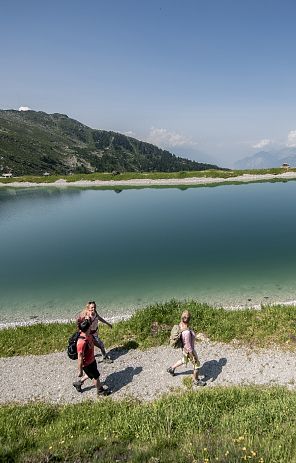Glungezer Giant. Legend
The legend of the Glungezer giant is told as follows:
Where the Tulfein Alm lies today, in the midst of fragrant meadows, once stood the palace of a shepherd king who lived there with his four daughters and ruled his people mildly and beneficially. One day, a giant broke into the peace of this high valley. He lived in a cave near the Glungezer peak and often roared so terribly at night that avalanches and mudslides were torn loose and tumbled into the valley. One day, when the giant saw the four beautiful royal daughters, his rough heart was seized by longing - he wanted to marry one of the princesses and made his wish known to the king at Tulfein Castle.
The king was shocked to the core when he heard the ugly giant's request, but replied that as a father he would give his daughters free rein to choose; if the giant won the affections of one of the princesses, he would also be welcome as the king's son-in-law.
So the Glungez giant, who had dressed himself up as finely as possible, presented his proposal. The four royal daughters burst out laughing as they heard the clumsy giant stammering amorous words and sent him home again. The rejected suitor, however, plotted a terrible revenge. The next night, he rolled boulders as high as houses from the Glungezer towards Tulfein, pushing the royal castle together with the ruler and the four princesses to the edge of the Wildsee, into whose floods the castle and its inhabitants sank. Today, the pond that remains of that lake is called the "Black Well".
Now that his revenge had cooled, the giant felt deep remorse. He sat on the shore of the Wildsee for days and nights, weeping bitterly, but was unable to bring the drowned princesses back to life. Later, the Glungezer giant was transformed into an ice-grey little mountain man, his wrinkled little hands longingly stretching out towards the bright figures of the four royal daughters floating above the lake as Salige. But the unfortunate man is unable to reach the ghostly figures and in his despair throws himself into the waves to cool the burning embers of his passionate heart.
Source: The most beautiful Tyrolean legends, Karl Paulin, Innsbruck 1972




